Research: Aesthetics & learning
Why Aesthetics?
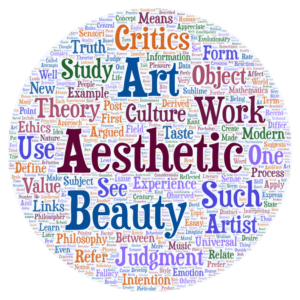
A child’s first experience, of peeking through a telescope to see the vivid sharply etched, yet fragile, rings of Saturn is a powerful one; perhaps as powerful as standing amidst redwood trees listening to the sound of wind rustling through the leaves or experiencing a moment of clarity when an elegant geometrical proof, surprising in its simplicity, emerges from a chaos of sketches and doodles. It is in this sense of awe and wonder that our minds nibble at confronting powerful ideas such as infinity (whether the infinity of numbers, or the interminably large scale of the cosmos, or the immeasurably small universe of cells and atoms and quarks). The emotional turbulence that overwhelms us when we reflect on nature, truly understand a scientific idea, or solve a tricky mathematical or engineering problem often leads to powerful aesthetic experiences. These experiences, we argue, are no different or less than the aesthetic experience we have in engaging with powerful artistic human creations, be it music or the visual arts.
That said, the role of the aesthetic has often been ignored in the discussion on learning. And I truly believe that is a huge mistake on our part.
On designing aesthetic educational
experiences in science
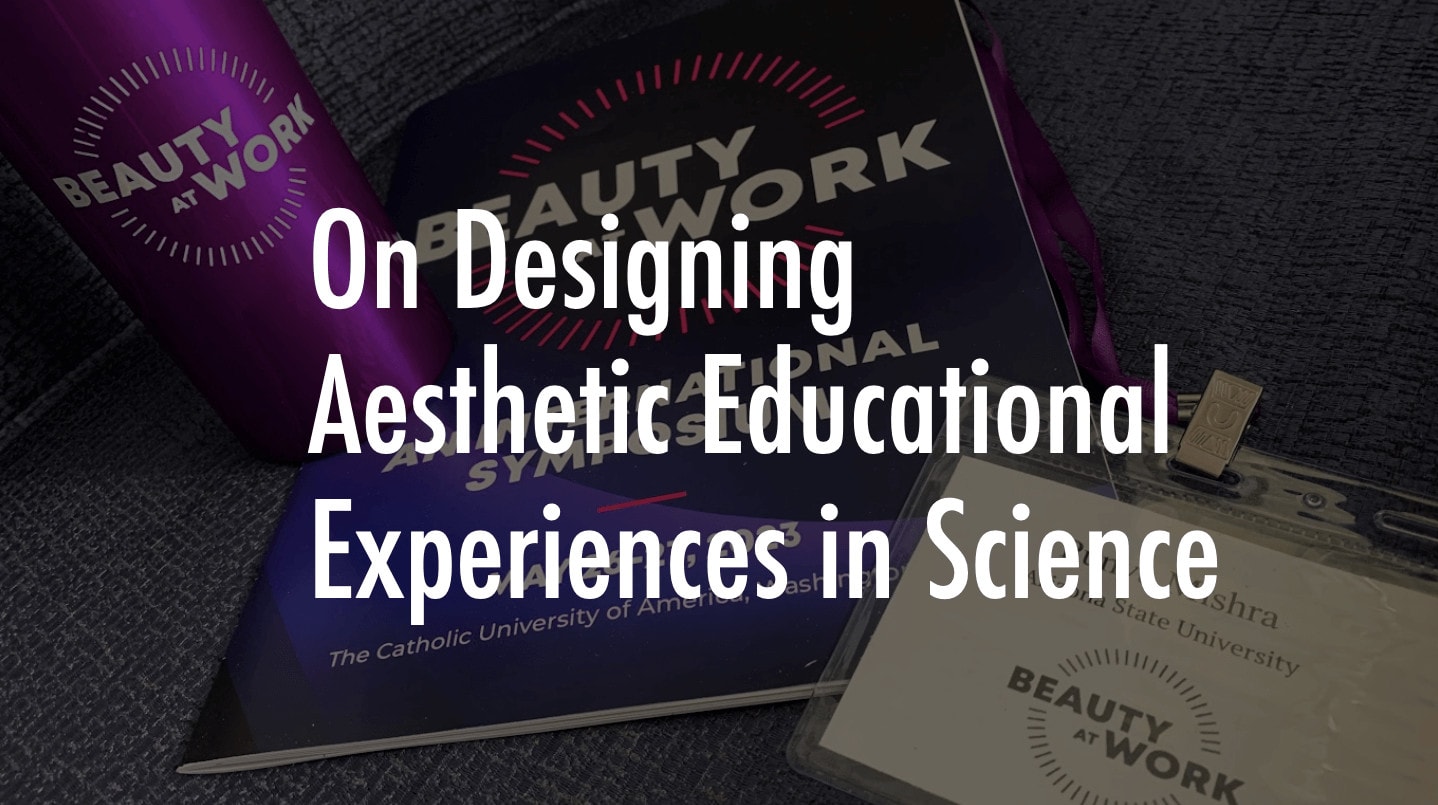
I was invited to give a presentation on this topic at conference titled Beauty at Work: An International Symposium at the Catholic University of America, in Washington DC (May 2023). I was part of a session on Aesthetic Properties and Scientific Information, along with Myron Penner (a philosopher of science from Trinity Western University); Amanda Nichols (professor of chemistry from Oklahoma Christian University); Milena Ivanova (from Fitzwilliam College, Cambridge); and Rebecca Kamen (artist in residence at the University of Pennsylvania). More details about the conference and a video of my talk (On designing aesthetic educational experiences in science) can be found here.
Aesthetics & coding
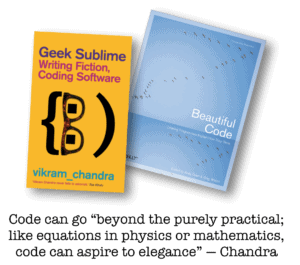
Does beauty have a role to play in learning to code? Can code aspire to beauty and elegance? In this article (Good, Keenan, & Mishra, 2016, titled Education:=Coding + Aesthetics), we argue that it does and it should.
Mathematical poetry
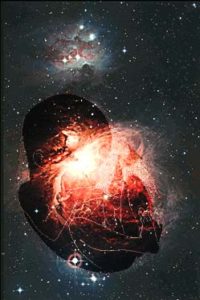
What does mathematics have to do with poetry? Not much, at one level, but a lot at another. Though their goals may be different, both mathematicians and poets play with structure and form, seek elegance and parsimony in their work. And in their own way they strive for truth and beauty—defined within the rules and structures of their discipline. I have loved both mathematics and poetry – with little or no success in each. But over the years I have played little games with both and some of these explorations are presented here.
Why aesthetics is essential (for science education)
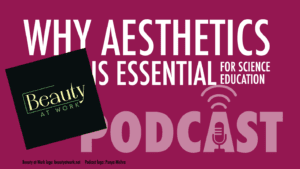
Beauty at Work is a podcast that “explores how beauty shapes our lives and the work that we do” hosted by Brandon Vaidyanathan, Associate Professor of Sociology at The Catholic University of America. In its first season the focus is on beauty in science. As part of this series, Brandon has spoken with physicists, philosophers, psychiatrists, neuroscientists, entrepreneurs, psychologists and more. I was lucky to be a guest on this podcast, in an episode titled: Why Aesthetics is Essential for Science Education.
Why Teachers should care about beauty
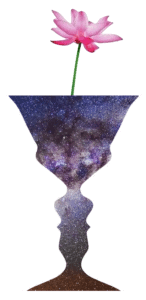
In the article for the journal iWonder (Why teachers should care about beauty in science) – we explored the role of beauty in science education. In this piece, targeted at science educators, we use research in science education to highlight the importance of teachers consciously making connections to aesthetic aspects of science. Caring about beauty in science can inspire a sense of wonder and curiosity.
Aesthetics and STEM education
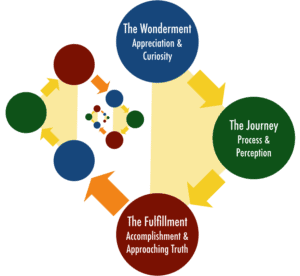
Developing a Rhetoric of Aesthetics: The (Often) Forgotten Link Between Art and STEM is an article that digs into these ideas in depth. In essence, this article is an extended argument that builds on several lines of work including philosophy, psychology, history and biography, in order to promote a model of learning based on aesthetic ways of knowing, thinking, and exploring the world. This emphasizes key impulses that make us human. We provide a generative three-fold fractal framework that seeks to capture the entire cycle of engaging in STEM practices: from curiosity to the process of seeking answers, to a sense of completion that in turn leads to new curiosities to explore. We suggest that this leads to a powerful virtuous cycle that seeks to maintain the same sequence at different levels of learning—from the beginner to the professional scientist, mathematician, or engineer.
Of Art & algorithms
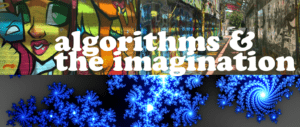
In a couple of articles (most importantly Mishra & Yadav, 2013 and Evans, Henriksen, & Mishra, 2019) we argue that the partnership of deep human content knowledge with new technological advances can lead to deeper and more profound creative insights. We explore how computational thinking, combined with deep knowledge of a discipline, can lead to creative solutions that could not have been possible before. Thus the creative output is not determined by only the individual or the technology, but rather through a “partnership” between the two.
Blog posts related to aesthetics, beauty and learning
Cybernetics, design & creativity
180 degree rotational ambigram for the word "cybernetic," ©punyamishra Here is the next article in our series Rethinking Technology & Creativity in the 21st Century for the journal TechTrends featuring an interview with Dr. Paul...
STEM teaching & leadership for urban educators
The MSUrbanSTEM project was one of the best projects I have ever been part of. We worked with 124 Chicago Public School STEM educators over three years, in an effort to develop their teaching and leadership in the STEM areas. We have written about this...
The beauty of randomness
I have always been intrigued by the idea of how truly random our lives really are. Seemingly minor events can trigger effects, rippling through our lives, effects becoming causes, leading to profound changes and transformations. Ray Bradbury's short...
2017 Torrance Lecture on Creativity
This past April, I delivered the annual E. Paul Torrance Lecture at the University of Georgia. Being invited to give this talk was a huge honor, for two main reasons. First, because of Paul Torrance, the person for whom this lecture is named. Dr. Torrance, known...
Origin-al Interface snafu!
The Origins Project at ASU is an attempt to explore humankind's most fundamental questions about our origins. As the website says, This project brings "together a diverse collection of the world’s leading scientists, scholars, and public intellectuals...
Robert Pirsig, 1928 – 2017
Zen and the Art of Motorcycle Maintenance was one of those books that have influenced me deeply. I read it when I was in high school and read it again and again, almost obsessively for a while. It was my companion through college, graduate school and beyond. I...
Shulman on learning
One of my favorite quotes about learning. From this article, Taking Learning Seriously the entirety of which is worth reading. But for now here is the quote, and a visual (just because): Learning is least useful when it is private and hidden; it is most powerful when...
Hidden Figures
In honor of the movie "Hidden Figures" here is a new figure-ground ambigram. Enjoy.
Failed Haiku
Failed Haiku Five syllables firstSecond one has seven moreA failed Haiku! So close... almost had it. In keeping with the meta-theme, here is another one, written many years ago, and lightly edited by Danah Henriksen. Turvy-Topsy limerick This limerick-wiseHas not...
Untangling a decade of creativity scholarship
How do we capture a program of scholarship in an image? This is particularly complicated when the work is a tangled web of connections between research, teaching and practice, spread out over multiple publications, presentations and people. One attempt to do...
Coding + Aesthetics: New Journal Article
Does beauty have a role to play in learning to code? Can code aspire to beauty and elegance? In this article, we argue that it does and it should. Read on... Good, J., Keenan, S. & Mishra, P. (2016). Education:=Coding+Aesthetics; Aesthetic Understanding,...
